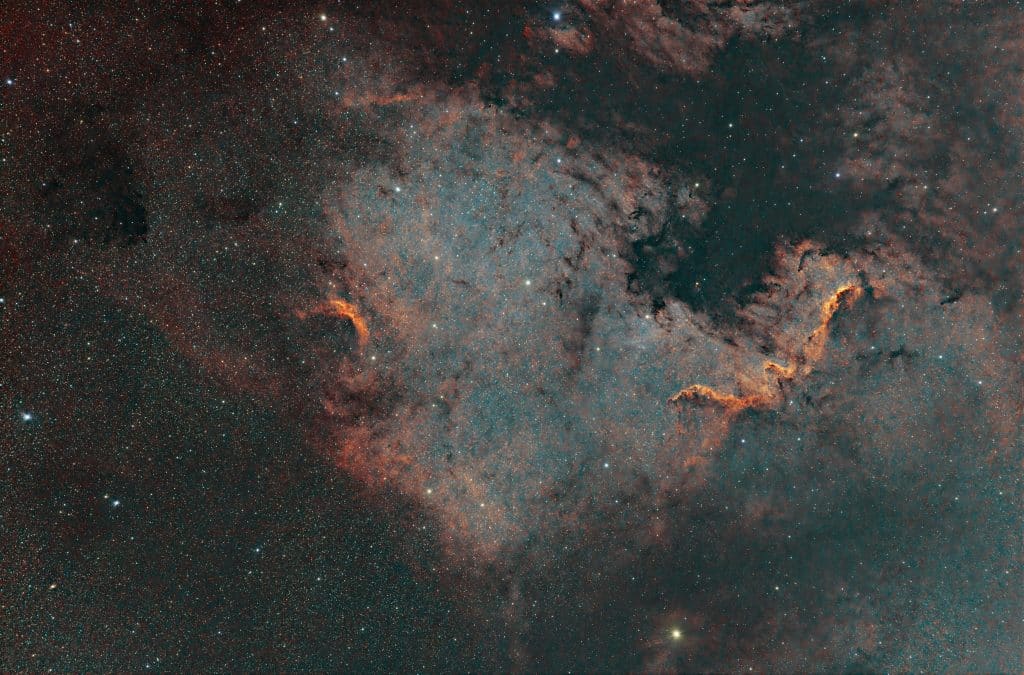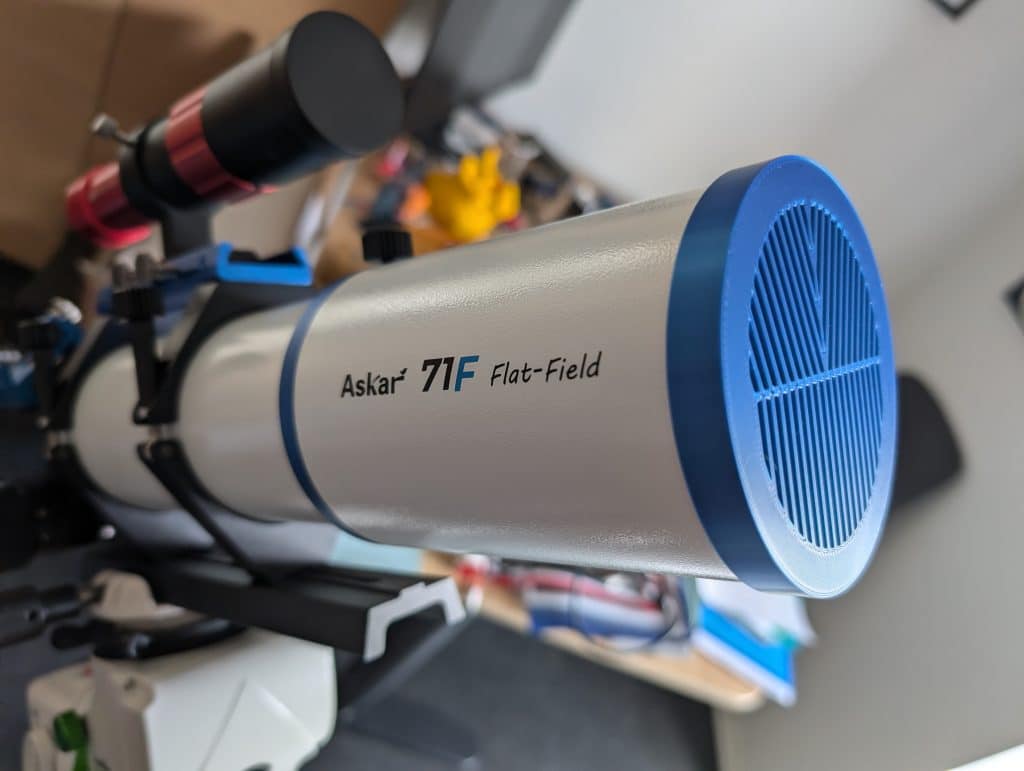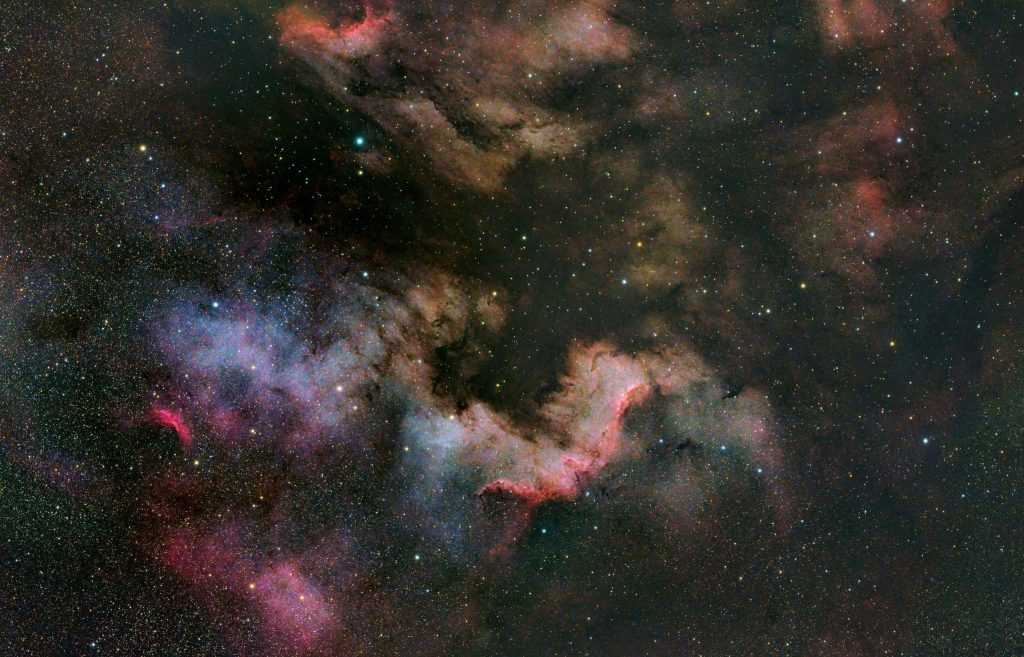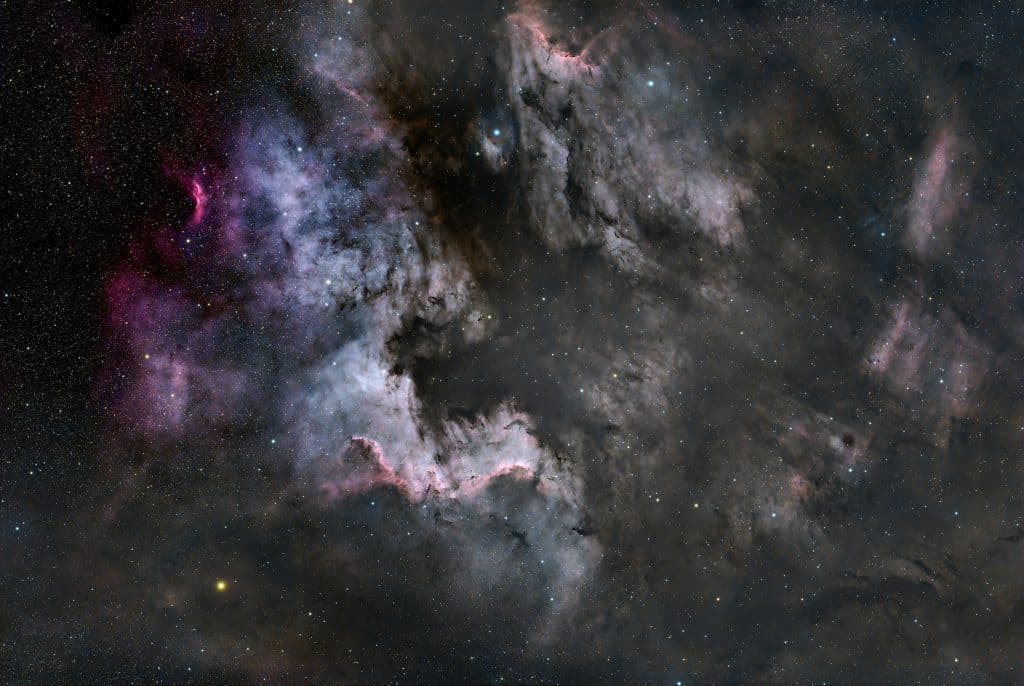Table of Contents
During the summer months, I have been working on a new exciting project. The reason for this project was to gather data on the North American Nebula. To be able to compare the image quality of my ole telephoto lens and the Askar 71F Flat-Field which did arrive here at the beginning of August.
The telephoto approach
In early May I ordered the new Askar 71F Flat-Field, when I decided to start working on getting a good image of the North American nebula also known as NGC 7000. I planned to gather as much integration time on this target as possible before I got the new scope, Unfortunately, the weather did not align well with my plan. Hence I have only acquired a few nights with of data where the PixInsight rejection rate has been very high. After stacking and processing I ended up with the image shown below.

To practice some editing skills, the image above the nebula has been recoloured. It is important to note that there is a total integration time of approximately 5 hours using the Tamron lens at the maximum zoom of 600 mm. This image clearly lack integration time, due to the grainy color noise the image is suffering from.
The reason that I was interested in testing NGC 7000 was that it is fairly large and therefore it is a good test bed for comparing the quality.
The Askar 71F Flat-Field
At the beginning of August, my long-awaited telescope finally arrived. In May I ordered the newly released Askar 71F Flat-Field – you can read about my expectation of the scope in my blog post. This meant I could start observing with an actual scope rather than a telephoto lens. My new scope has a focal length of 490 mm and an aperture of 71 mm making it an f/6.9 scope.

Beside the telescope, I 3D-printed a Bathinov mask in a blue colour to match the accents on the OTA. I found the STL file at printables.com. The print was performed on a Prusa Mini+ and the outcome was brilliant.
As you can see from the image to the right the blue PLA that I had, match the blue accents on the OTA extremely well. The fit is snug, but works well.
Usually when you get new equipment bad weather rolls in. However this time I was lucky I had a few days of vacation left and the weather was reasonable stable, and clear. Hence I was of to test the equipment right away. I must say what a joy. The telescope performed perfectly, the Bathinov mask made it a joy to achieve focus in a hurry.
The fact that this scope is crafted so you won’t need a field flattener even at Full-frame is outstanding. I attached my camera and out under the stars I went. No need to work out back-focus no unsharp stars, not even in the corners of the frame. No more chromatic aberration, as the Tamron lens suffered greatly from. Everything all of a sudden made much more sense.
So to compare this scope to the Tamron telephoto lens I decided to stay on the North American Nebula, to get a reasonable comparison.

Short imaging session on the North American Nebula
The first night allowed me to capture about one hour of data on the target. The main thing that struck me when using this scope was. When I previously had seen astrophotographers imaging on YouTube, they were able to see the nebula in their 120 s subs, I had never had that experience – and I thought that it was not real – somehow. But now with a proper scope, I started to see the nebula appear in my subs as well.

Now, the image above only contains the first light data and 54 minutes of data. However, the quality is much better, but with 54 minutes, there is still a significant amount of colour noise in the image. One thing I noted when processing this image compared to previous images of this target was that the number of rejected images in the stacking software was greatly reduced.
Multiple nights with the Askar 71F
The final thing to check was how the image quality would improve if the exposure time were improved. To improve the total integration time, I combined data shot on two different nights. The main issue here was getting the image rotation to be the same for both nights.
I managed to get a gran total of 108 frames of 120 seconds each, adding to a total exposure time of 3 hours and 36 minutes.

Facts on the North American Nebula
This amazing nebula in facts could be something like
- Constellation: Cygnus
- Designations: NGC 7000, Caldwell 20, Sharpless 117
- Object Type: Emission Nebula
- Apparent Magnitude: 4
- Size: 120 by 100 arcminutes equivalent to 6 degrees
- Distance: 1500 light-years from Earth.
- Best observed: Between May and December.



